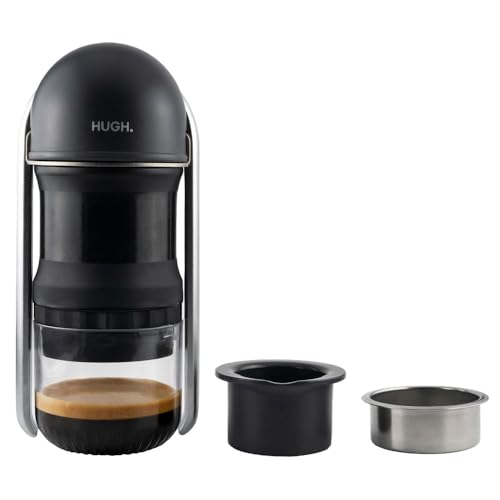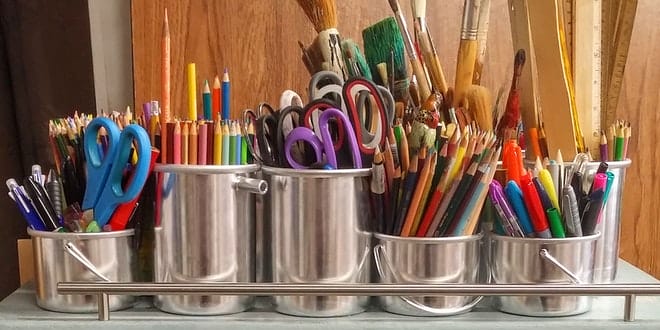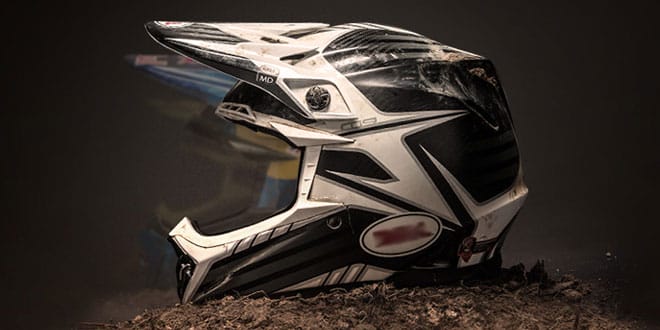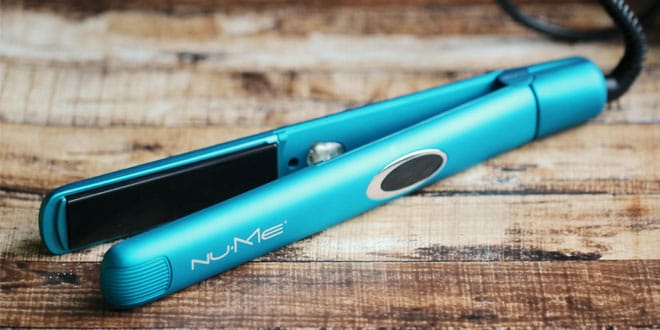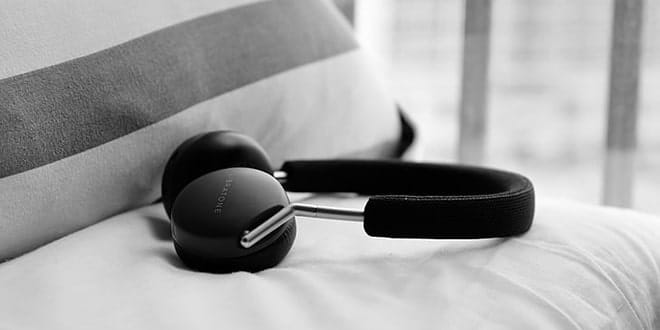Table of Contents
Are you a coffee lover looking for the perfect espresso machine? Look no further than manual espresso machines! Manual espresso machines are great for those who want to take control of their own brewing and customize their cup. They provide an authentic, barista-level experience right at home. In this article, we’ll review 10 top-rated manual espresso machines so that you can find your ideal match. From price point to features, these machines have everything you need to make delicious espressos in the comfort of your own kitchen. So if you’re ready to get started on your journey toward caffeine perfection, keep reading!
See also: 10 Top Rated Floor Sweepers & Accessories.
1. WACACO Nanopresso Portable Espresso Maker Bundled with Protective Case, Mini Travel Coffee Machine, Perfect for Camping, Travel and Office( Black)
- Product name: WACACO Nanopresso Portable Espresso Maker Bundled with Protective Case, Mini Travel Coffee Machine, Perfect for Camping, Travel and Office( Black)
- Category: Top Rated >> Manual Espresso Machines
- Product group: Kitchen
- Brand: WACACO
- Model number: NANOPRESSO ELEMENTS GREY
- Part number: 230078
2. Flair UPDATED PRO 3 (Black) - All manual lever espresso maker with a stainless steel brew head, pressure gauge, and a shot mirror
- Product name: Flair UPDATED PRO 3 (Black) - All manual lever espresso maker with a stainless steel brew head, pressure gauge, and a shot mirror
- Category: Top Rated >> Manual Espresso Machines
- Product group: Kitchen
- Brand: Flair
- Model number: 647213148077
- Part number: Flair-Pro2
3. De’Longhi Manual Espresso Machine with 15 Bar Pump, Milk Frother, and 2 Thermo Espresso Glasses
- Product name: De'Longhi Manual Espresso Machine with 15 Bar Pump, Milk Frother, and 2 Thermo Espresso Glasses
- Category: Top Rated >> Manual Espresso Machines
- Product group: Kitchen
- Brand: De'Longhi
4. De’Longhi Stilosa Manual Espresso Machine, Latte & Cappuccino Maker, 15 Bar Pump Pressure + Manual Milk Frother Steam Wand, Black/Stainless, EC260BK & DLSC058 Coffee Tamper
- Product name: De'Longhi Stilosa Manual Espresso Machine, Latte & Cappuccino Maker, 15 Bar Pump Pressure + Manual Milk Frother Steam Wand, Black/Stainless, EC260BK & DLSC058 Coffee Tamper
- Category: Top Rated >> Manual Espresso Machines
- Product group: Kitchen
- Brand: De'Longhi
5. La Pavoni Professional 16-Cup Espresso Machine, Copper and Brass
- Product name: La Pavoni Professional 16-Cup Espresso Machine, Copper and Brass
- Category: Top Rated >> Manual Espresso Machines
- Product group: Kitchen
- Brand: la Pavoni
- Model number: PB-16
6. WACACO Nanopresso Portable Espresso Maker, Upgrade Version of Minipresso, 18 Bar Pressure, Small Travel Coffee Maker, Manually Operated. Perfect for Kitchen and Office
- Product name: WACACO Nanopresso Portable Espresso Maker, Upgrade Version of Minipresso, 18 Bar Pressure, Small Travel Coffee Maker, Manually Operated. Perfect for Kitchen and Office
- Category: Top Rated >> Manual Espresso Machines
- Product group: Kitchen
- Brand: WACACO
- Model number: Nano+BAG FBA
- Part number: 14680800
7. WACACO Nanopresso Portable Espresso Maker Bundled with NS Adapter, Compatible with NS Capsules and Ground Coffee, Manually Travel Coffee Machine Set, Perfect for Camping
- Product name: WACACO Nanopresso Portable Espresso Maker Bundled with NS Adapter, Compatible with NS Capsules and Ground Coffee, Manually Travel Coffee Machine Set, Perfect for Camping
- Category: Top Rated >> Manual Espresso Machines
- Product group: Kitchen
- Brand: WACACO
- Model number: Nanopress+Bag+Adapter
8. STARESSO Classic Portable Espresso Maker & Discovery Manual Coffee Grinder Set with Travel Case, Travel Coffee Maker Kit Perfect for Travel, Camping, Hiking, Present for Father & Mother
- Product name: STARESSO Classic Portable Espresso Maker & Discovery Manual Coffee Grinder Set with Travel Case, Travel Coffee Maker Kit Perfect for Travel, Camping, Hiking, Present for Father & Mother
- Category: Top Rated >> Manual Espresso Machines
- Product group: Kitchen
- Brand: STARESSO
- Model number: Camping set
- Part number: SP200+D6
9. LEVERPRESSO HUGH V4 Lever Portable Espresso Maker, Double Espresso Shot with Ridgeless Portafilter Basket, Manually Operated, Perfect for Hiking & Camping (Pressurized Filter)
- Product name: LEVERPRESSO HUGH V4 Lever Portable Espresso Maker, Double Espresso Shot with Ridgeless Portafilter Basket, Manually Operated, Perfect for Hiking & Camping (Pressurized Filter)
- Category: Top Rated >> Manual Espresso Machines
- Product group: Kitchen
- Brand: LEVERPRESSO
- Model number: LP-004PB
- Part number: LP-004
10. De’Longhi Stilosa Manual Espresso Machine, Latte & Cappuccino Maker, 15 Bar Pump Pressure + Milk Frother Steam Wand, Black / Stainless, EC260BK, 13.5 x 8.07 x 11.22 inches
- Product name: De'Longhi Stilosa Manual Espresso Machine, Latte & Cappuccino Maker, 15 Bar Pump Pressure + Milk Frother Steam Wand, Black / Stainless, EC260BK, 13.5 x 8.07 x 11.22 inches
- Category: Top Rated >> Manual Espresso Machines
- Product group: Kitchen
- Brand: De'Longhi
- Model number: EC260BK
* You can check the reference search link for Manual Espresso Machines.
Related: 10 Top Rated Coffee Machines.
Everything You Need to Know about Manual Espresso Machines

Ahh, the aroma of freshly roasted beans – it’s enough to make any coffee lover swoon! And when you get your hands on a manual espresso machine, learning how to craft that perfect cup in the comfort of your home is like a dream come true. Whether it’s for brewing an addictively creamy cappuccino or pulling a perfectly frothy shot of espresso—there’s nothing quite as satisfying as mastering the art of making delicious coffee drinks with an old-school manual espresso machine. From ensuring utmost freshness and flavor to crafting world-class beverages with ease—we will take you through everything you need to know about these amazing machines!
1. What is a manual espresso machine?
A manual espresso machine is a type of coffee-making device that requires the user to manually operate each step of the process. Manual machines are known for producing a particularly rich, flavourful cup of espresso – and with precision control over every element of the brewing process, they can make it possible to achieve near-perfect extraction with each brew.
The steps required in making coffee on a manual machine include grinding the beans, tamping them down into an “espresso puck” (a small cake made from tightly packed grounds), and then using a lever arm or handle to pressurize water through the puck at relatively high temperatures. With this method, you have full control over both how long your coffee will extract and how much pressure is applied during extraction – allowing you to craft exactly the kind of cup you prefer.
Manual espresso machines come in both manual lever models as well as electric pump models; while there may be slight variations between different models, most require similar assembly/disassembly and cleaning processes. Perhaps most significantly they offer complete freedom over things like grind size (for better ‘misting’) and dosage amounts used during different shots – so users can really customize their beverages according to preference.
Generally speaking, these machines tend to be more expensive than other types such as pod/capsule systems which are popular due to their convenience factor – but if you’re looking for top-quality espresso drinks consistently it’s worth investing in one!
2. How does a manual espresso machine work?
A manual espresso machine is a type of coffee-making device that utilizes pressure to force heated water through ground coffee beans. It is known for producing an intensely rich and flavorful cup of espresso, due to the unique process it uses.
The basic design of a manual espresso machine consists of four parts: the portafilter (the container which holds the ground coffee), the boiler (which heats and pressurizes water), the pump, and the group head or wand (where you add milk for cappuccinos).
To use a manual espresso machine, you will first need to grind your own beans fresh each time – as pre-ground commercial blends may not produce good results. Then fill up your portafilter with enough grounds to form an even layer slightly below its edge. Place this in your group head or wand before tamping it down gently using an appropriately sized tamper tool. Ensure that there are no air pockets around the perimeter before continuing on.
Once everything is set up correctly, place a mug beneath the nozzle and turn on your boiler by pressing its button or switch; this should heat up your water rapidly until reaching boiling point at around 95 degrees Celsius within minutes. Now wrap your fingers around either side of the handle tightly then push down steadily until you hear two clicks signaling activation; once fully activated, hot pressurized water will be pushed through grounds at some nine bars usually taking between 25~30 seconds depending on how finely ground they were initially prepared. Once 30 seconds have passed remove the handle from the press allowing all remaining air bubbles to escape from the brewing chamber before decanting the concoction into the waiting mug. Enjoy!
3. What are the benefits of using a manual espresso machine?
Using a manual espresso machine can have many benefits for the avid coffee-lover. Manual espresso machines offer an unparalleled level of control over your coffee-making process. With this kind of machine, you’re able to adjust pressure, water temperature, and grind size depending on the type of ground coffee you’re using and the desired flavor profile of your drink. This means that you can produce a perfect shot every time with consistent results like an experienced barista!
In addition to allowing for precise control over the espresso process, manual machines are also a great choice for those looking to save money in the long run. Manual machines use less electricity than electric models since they don’t require heating elements or pumps to create steam or pressurize water – meaning lower running costs! Some manual machines even feature adjustable levers which allow users to exert different levels of pressure during extraction – giving more advanced users even finer control over their brews.
Lastly, manual espresso machines are incredibly easy to maintain and clean due to their simplistic designs. As there are fewer parts that need regular cleaning such as milk frothers or built-in tampers, it often takes only minutes between each session – making them ideal if you’re often making multiple drinks at once for larger groups! Overall, if you’re after total precision when it comes to pouring that perfect shot then investing in a quality manual espresso machine is certainly worth considering!

4. How do I choose the right manual espresso machine for me?
Choosing the right manual espresso machine for you can be a daunting and overwhelming task. However, by following a few simple steps, you can quickly narrow down your choices and find the perfect fit for your needs.
The first thing to consider when selecting an espresso machine is what type of drinker you are. Are you a light coffee drinker who enjoys espresso-based drinks or someone seeking the complete cafe experience? Do you need a semi-automatic machine that requires only minimal intervention from you during each cup production or perhaps something even more hands-on such as an authentic lever-driven machine? Whatever your preference may be, there’s likely an espresso machine out there with those exact features catered just for you!
Next up would be researching different brands that offer manual machines at varying price points and capabilities. It’s important to note that higher-end machines tend to produce better quality results but at greater cost so make sure it’s well worth it if splurging on top-tier equipment is something within reach. Also don’t forget about key features such as boilers, portafilters (the filter basket where the ground coffee goes in), tamper size(which should fit nicely into one’s hand), filters, and most importantly any design specifications tailored specifically towards quality drinks being made consistently throughout multiple coffees brewed over time without oils buildup, etc…
Finally, ask around from seasoned experts for their opinion of certain models they may have used in their lifetime of brewing making sure to check reviews online concerning individual experiences with these models so as to leave little room for surprises when research has been completed beforehand – after all no one likes buying subpar products! Ultimately though by weighing all factors together such as budget limitations, personal preferences and details previously mentioned; choosing the right manual espresso machine doesn’t really seem so intimidating after all now does it?
5. What are some tips for making the perfect espresso with a manual espresso machine?
Using a manual espresso machine is both an art and a science. It can take some practice to get the perfect shot, but it’s well worth it! Here are the basics steps to consider when using a manual espresso machine:
- Start by choosing the right coffee beans for your espresso. Make sure they are fresh and ground specifically for an espresso maker.
- Measure out the exact amount of coffee grounds you need for one perfect cup of espresso – usually around 7-11 grams. Place them in the portafilter and firmly tamp them down with your tamper tool (this helps maximize water pressure).
- Next, place the portafilter onto your machine and turn on its steam wand or pump system (some machines allow you to heat up your water separately if desired). If using steam, make sure there’s enough time for your water to reach 200°F before running through – this ensures quality extraction from all of those tiny grounds. If using a pump system, be sure not to overfill; just press until you hear liquid begin streaming out!
- As soon as liquid begins pouring out into your awaiting mug, adjust the pressure on either type accordingly so that you have about 20-30 seconds between pauses when extracting — this is where timing becomes key with manual machines. Once finished brewing, turn off the heat source or shut off the valve at the proper time.
- Lastly, remove the portafilter from the machine and pour any excess through the strainer screen if needed; then rinse all pieces thoroughly before the next use! Store these parts until ready again – voila! You now have yourself perfectly brewed deliciousness ready whenever you desire it with manually operated espresso makers!
6. How do I clean my manual espresso machine?
Cleaning a manual espresso machine properly is essential in ensuring that you get the best results when brewing. While automatic machines simplify the process, with manual machines you must take a few extra steps to ensure your coffee is clean and tasty every time.
First and foremost, it’s important to rinse out all of your equipment after each brew. This means removing the portafilter from the espresso group head, emptying out any remaining grounds from inside, running clear water through both sides of the portafilter (including backflushing), and wiping down all surfaces with a soft cloth or sponge.
Once all equipment has been rinsed off thoroughly, more regular cleaning should be done once or twice a week using descaling products designed specifically for espresso machines like Urnex Coffee Machine Cleaning Powder or Cafiza Espresso Machine Cleaner. These detergents are formulated to dissolve oil residues on contact without damaging delicate parts of your machine such as rubber seals or o-rings. Following instructions on the product packaging carefully for best results!
Finally, it’s important to prevent any build-up of limescale by regularly purging your machine with fresh water before starting each brew session (especially if you live in an area where tap water is hard). Limescale can damage vital components over time leading to costly repair bills – so it pays to be diligent about maintenance!
Overall then with some simple steps and regular cleaning, you can keep your manual espresso machine running smoothly for many years into the future – delivering delicious cups of coffee every time!
7. What are some common problems with manual espresso machines?
Manual espresso machines offer a unique, hands-on experience when it comes to brewing your own espresso. While these machines are incredibly reliable and give you greater control over your coffee than automatic models, they can be susceptible to some problems. Here are some of the most common issues associated with manual espresso machines:
- Clogged Groupheads – Manual espresso machines come with group heads that filter water through coffee grounds in order to produce espresso. If these become clogged due to a build-up of excess coffee grounds or too tight of a tamp, you’ll need to backflush or even replace the group head in order for the machine to function properly again.
- Expensive Consumables – Manual espresso machines require frequent replacements since their parts tend to wear out faster than those on an automatic model due to increased use and maintenance requirements. This means not only will you have higher electricity bills from having more components turned on, but consumable items like gaskets and filters must also be purchased periodically which can add up quickly over time.
- Slow Brewing Times – One benefit of manual espresso machines is that each cup is brewed as needed so no preheating is needed after the first switch-on; however this does mean that brewing times can take several minutes for each cup compared with just seconds when using an automatic machine as well as other manual operations such as filtration time being needed beforehand too in order for quality drinks could be produced every single time!
- Inconsistent Crema Quality – Without PID temperature control technology which more modern semi-automatics come equipped with, manually controlled temperature settings often result in inconsistent crema production throughout the day due to fluctuations within your boilers environment causing thermal fatigue; fortunately though PID controllers have now been implemented into many home use designs allowing users more stability simply by pressing preprogrammed buttons making things rather easy once again!
- High Maintenance Requirements – As manual espresso machines require frequent calibrations and cleanings which sometimes need replacement parts (such as gaskets), they can cost quite a bit of money over time if not taken properly care of daily before running any new brews through them meaning regular upkeep must always remain top priority otherwise all its previous hard work will be made obsolete fast enough…
See also: Top 10 Most Wished Coffee Machines / Coffee Makers.
Conclusion

Manual espresso machines are a great choice for coffee lovers who want to brew their own espresso with barista-style precision and quality. Not only do manual espresso machines offer superior flavor extraction, but they also require minimal effort and time compared to semi-automatic or fully automatic machines. With adjustable temperature control, programmable dosing settings, pre-infusion capabilities, and PID controllers, these espresso machines can produce consistently delicious shots with ease. Whether you choose the Rancilio Silvia, the Gaggia Classic Pro Espresso Machine, or the Breville Barista Express ESP8XL; each option is sure to provide an excellent taste experience every time. The best part is that manual espresso machines don’t require any special skills or knowledge beyond basic maintenance and calibration, making them ideal for those who want to enjoy a high-quality cup of coffee without needing to spend too much money or time.








